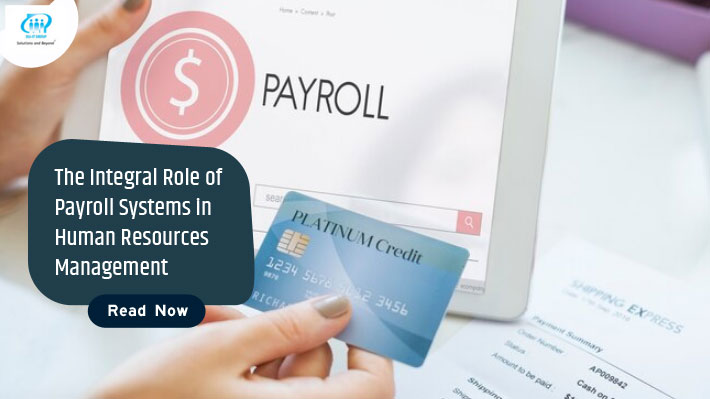In the dynamic landscape of Human Resources management, where businesses are constantly adapting to technological advancements, the role of payroll systems has become increasingly integral. Payroll systems play a pivotal role in streamlining HR processes, ensuring accuracy, compliance, and overall employee satisfaction. Managing payroll and HR (Human Resources) functions are critical aspects of running a business. Combining payroll with HR processes can streamline operations and improve overall efficiency. Here are some key components to consider when integrating payroll with HR:
This article delves into the multifaceted significance of payroll systems in the realm of HR management.
-
Automation and Efficiency:
One of the primary advantages of integrating payroll systems into HR management is the automation of repetitive tasks. Manual payroll processes are not only time-consuming but also prone to errors, leading to discrepancies in employee payments and potential legal issues. Payroll systems automate calculations, and other payroll-related tasks, minimizing errors and significantly improving efficiency.
Automated payroll systems also facilitate faster processing of payroll, ensuring that employees receive accurate and timely compensation. This not only boosts employee morale but also frees up HR professionals to focus on strategic initiatives, talent management, and employee engagement.
-
Compliance and Risk Mitigation:
Maintaining compliance with ever-evolving laws, labor regulations, and reporting requirements is a complex challenge for HR departments. Payroll systems play a crucial role in ensuring compliance with local, state, and federal regulations. These systems are designed to stay up-to-date with changes in labor policies, codes, wage laws, and other relevant regulations, reducing the risk of non-compliance and associated penalties.
By automating salary calculations and deductions, payroll systems minimize the likelihood of errors, ensuring that organizations adhere to legal requirements. This not only safeguards the company from legal repercussions but also fosters a culture of trust and transparency among employees.
-
Accuracy and Precision:
Payroll errors can have a cascading effect on employee satisfaction, productivity, and overall organizational morale. Payroll systems excel in maintaining accuracy and precision in salary calculations, and benefit allocations. The use of automated systems significantly reduces the chances of miscalculations, ensuring that employees are compensated accurately for their work.
Furthermore, payroll systems help in tracking and managing employee time and attendance, preventing discrepancies and fraudulent activities. This precision not only enhances the employer-employee relationship but also promotes a fair and transparent work environment.
-
Employee Empowerment and Self-Service:
Modern payroll systems often come equipped with employee self-service portals, empowering individuals to access and manage their payroll information independently. Employees can view their pay stubs, and benefit details, reducing the administrative burden on HR professionals. This self-service model enhances transparency and allows employees to have greater control over their financial information.
The ability to access relevant payroll information empowers employees, improving their overall job satisfaction and engagement. Additionally, self-service portals contribute to a more efficient HR workflow, as HR professionals can focus on strategic initiatives instead of handling routine employee inquiries.
-
Integration with HR and Accounting Systems:
Payroll systems are most effective when seamlessly integrated with other HR and accounting systems. This integration ensures a cohesive flow of data across various departments, reducing the likelihood of data entry errors and enhancing overall operational efficiency. When payroll data is integrated with HR systems, it provides a holistic view of employee information, facilitating better workforce management and strategic decision-making.
Furthermore, integration with accounting systems streamlines financial processes, enabling accurate budgeting, forecasting, and financial reporting. This interconnected approach aligns HR and finance functions, fostering collaboration and efficiency within the organization.
Conclusion:
In conclusion, the role of payroll systems in human resources management cannot be overstated. By integrating payroll with HR processes, businesses can enhance efficiency, reduce errors, and improve overall employee satisfaction. It also allows for a more comprehensive and cohesive approach to workforce management. Utilizing integrated HR and payroll software or leveraging APIs for communication between separate systems can help achieve these objectives. These systems contribute significantly to the efficiency, accuracy, and compliance of HR processes, ultimately enhancing the overall employee experience.
As businesses continue to embrace digital transformation, payroll systems stand out as a cornerstone in modern HR management, enabling organizations to navigate complexities, mitigate risks, and focus on strategic initiatives that drive success in the competitive business landscape.
